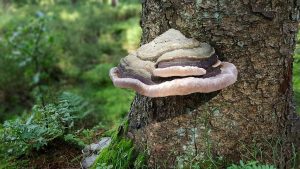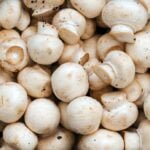What is a Fully Colonized Grain Jar?
Wanting to know What is a Fully Colonized Grain Jar? A completely colonized grain jar is a quart-sized container that has been totally inoculated with mushroom spawn or liquid tradition. This ready-to-use jar will be cassed, used for grain transfers or spawned into bulk substrate for bigger grows.
On common, colonization of an inoculated jar takes between 3 and 6 weeks; nevertheless, relying on the kind of inoculum used, this may occasionally take longer.
Preparation
Before storing a jar of totally colonized grain, be sure that it has been correctly sterilized. You can do that utilizing both a stress cooker to steam or sterilize the jar, or just warmth it in your stovetop.
Sterilization is important to ensure that mycelium to develop and thrive in a managed setting. Grain, as an example, incorporates excessive moisture ranges which make it troublesome for the mycelium to soak up sufficient water required for profitable cultivation with out a man-made substrate.
To sterilize grain spawn, fill mason jars with rye grain and prepare dinner it in a stress cooker for 90 minutes per quart jar of grain or 3 hours for baggage.
Once the jars have been sterilized, it’s essential to inoculate them together with your chosen liquid culture. The kind of fungus will decide how shortly and successfully your colonization takes place.
Typically, it is best to inoculate your jars inside 24 hours of sterilization. This is as a result of mycelium solely absorbs a lot moisture at one time and wishes time to completely hydrate itself.
Add a pinch of gypsum powder to your jars to assist your fungus soak up moisture extra successfully. Doing so will increase their floor space, which is important for profitable colonization. Furthermore, including gypsum offers vital minerals that promote plant progress.
Once your jars have reached 30% colonization, you possibly can shake them a bit with a guide or towel to combine issues up a bit extra evenly amongst grains and expedite colonization.
After inoculating the jars, place them in a cool, darkish place away from direct daylight (55-75 deg F) and allow them to incubate for a number of weeks. You ought to begin seeing white mycelium colonize the jar as well as droplets of mushroom exudate.
This is a sign that your jars are prepared for inoculation. Once they’ve totally colonized, they are going to be fully lined in white mycelium.
Sterilization
When used for spore manufacturing, a totally colonized grain jar must be sterilized with a purpose to forestall contamination. Sterilization will be achieved by means of a number of strategies; boiling the jars, tyndallization or fractional sterilization are two fashionable choices.
Boiling jars or bags at high temperatures for an extended period of time is one common sterilization method used by mushroom farmers. Sterilizing containers earlier than use is important as it would eradicate any present microorganisms and spores current within the substrate.
Sterilization will also be achieved by means of ethylene oxide gasoline sterilization, which includes exposing jars to a concentrated stream of the gasoline. The focus, air temperature and humidity, in addition to publicity length all play an necessary function in figuring out how efficient this sterilization process shall be.
Dry warmth is one other fashionable sterilization technique to eradicate microorganisms. The main purpose of dry warmth is to oxidize proteins inside cells and destroy microbial life by means of bodily heating. This approach works greatest for anhydrous oils, petroleum merchandise and bulk powders that can not be penetrated by steam or ethylene oxide gasoline.
Aside from the dry warmth technique, different strategies of sterilization embrace ionizing radiation and superheated water. Ionizing radiation is a extremely efficient sterilization possibility that may be employed on objects like sterile needles; nevertheless, its industrial software is restricted.
Sterile needles have to be cleaned and sterilized previous to utilization with a purpose to forestall an infection and contamination. This course of is comparatively easy and cost-effective, so it needs to be completed at any time when possible.
Once the jar has been sterilized, it is time to inoculate it with items of agar. For optimum success, conduct this inoculation beneath a laminar movement hood or inside a still-air field (SAB) for optimum success.
Once inoculated, the jar will be saved in a cool, darkish place for a number of weeks till it has totally colonized and is prepared to be used.
Inoculation
Once your totally colonized grain jar has reached the specified stage, it is time to inoculate it. This course of will be achieved in a number of methods.
First, guarantee your jars are stored in a darkish setting between 22-27degC or 70-80degF for incubation. This helps the mycelium shortly colonize the grain whereas reducing airflow and different elements which might decelerate inoculation velocity.
Avoid exposing your jars to daylight, as this could harm the mycelium and trigger it to decelerate and even die. Alternatively, retailer them in a cool, darkish location till use.
The subsequent step is so as to add a few ml of spore answer or liquid culture into every jar, inoculating the complete container with mycelium. After 3-4 days, you must start seeing white mycelium rising in your grains.
After a number of extra weeks, your grain jar needs to be fully colonized with fluffy white mycelium! At this level, you possibly can both re-inject the spawn into another container or bag, or if you wish to expedite colonization even sooner, pour a few of it into a container of sterilized supplemented sawdust for sooner progress.
When inoculating grain spawn into a container of sawdust, make sure you combine it totally to extend the quantity and spacing of mycelium inoculation factors all through. Doing this could considerably expedite the inoculation course of since your mycelium will not have to journey as far to achieve one other colony!
Once you have added the grain spawn to supplemented sawdust, shake the jar to unfold the agar evenly. Mycelium grows greatest when given extra floor space to work on, so mixing agar by means of entire grain jar will increase this potential unfold.
Once your tub of inoculated grain is full, you possibly can add it to a bulk substrate for bigger grows or case them for future storage. When transferring grains between containers, it is best to do that in both a laminar movement hood or still-air field (SAB), as it will forestall airborne contaminants from moving into your closing product.
Colonization
Grain spawn is the inoculum of selection for a lot of gourmand and medicinal mushroom species. Not solely is it simple to make, but additionally offers important diet to your fungi. Unlike spores, you’ve got extra management over creating this inoculum relying on what works greatest together with your specific fungi and progress cycle.
Start by mixing your hydration grain in a jar with a breathable lid, which permits gasoline alternate and prevents the jar from drying out too shortly throughout incubation. Furthermore, this retains the jars cool to stop mildew accumulation.
Once the grain has been dehydrated and sterilized, we are able to start inoculating it with liquid tradition or spores. We sometimes inject roughly one to 2 CC of tradition per quart sized jar utilizing a flame sterilised syringe.
Once inoculating with liquid tradition, depart the jars at room temperature for 14 days. Once they attain 30% colonization, shake them gently to unfold out the mycelium extra evenly – it will drastically speed up colonization velocity!
The closing step is to combine the grain spawn with bulk substrate, which is able to allow your fungi to start fruiting. You can do that in a number of methods: mixing it with recent jar of fruiting medium or just including it into an present fruiting block.
When utilizing the jars for fruiting, it is greatest to combine them beneath a laminar movement hood or inside a still-air-box (SAB) when doable, with a purpose to keep away from contamination. Furthermore, take away the jars from warmth when prepared for fruiting, as warmth can harm spores.
We have noticed that inoculating 5 kilos of shiitake spawn with 20 baggage of bulk substrate can take roughly eight weeks for them to completely colonize. However, when inoculating greater than 40 baggage, colonization and contamination charges enhance dramatically.
Inoculating a totally colonized grain jar requires solely minimal steps, nevertheless it’s important to take action appropriately and never over inoculate. Over inoculating could cause the jar to dry out too shortly, stopping mycelium from totally colonizing.




